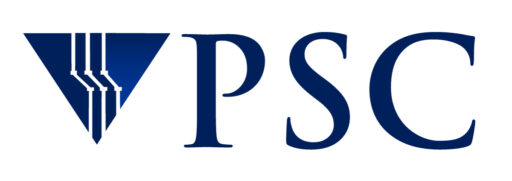PSC’s “WiiMD” Wins
Best Demonstration at TG ’08
PITTSBURGH, June 19, 2008 – The Pittsburgh Supercomputing Center (PSC) won the award for “Best Demonstration at TG08″ during the annual conference of the TeraGrid, the National Science Foundation‘s program of cyberinfrastructure for U.S. science and education, June 9-13 in Las Vegas. A PSC team of two scientists and a University of Pittsburgh student received the award for “WiiMD,” an innovative project that merges the video-game technology of the Nintendo Wii (pronounced “we”) with interactive supercomputing.
PSC scientist Shawn Brown demonstrates WiiMD at the National Science Foundation Open House in Arlington, VA
“The main goal” says Shawn Brown, team leader, “is to provide a means of education and outreach that connects people to supercomputing in an engaging way.” The PSC team demonstrated WiiMD with entertaining simulations that included buckyball bowling, in which people can impel a “buckyball” carbon molecule to smash a 10-pin formation of other buckyballs.
The judges, a panel of TeraGrid staff members from various sites, selected WiiMD from among 12 demonstrations submitted by research centers and universities around the country. Judges looked at how well the demonstrations “highlight the latest science advances, exciting gateway capabilities, new software approaches or the use of TeraGrid resources in education.†WiiMD’s visual impact made it a clear winner, with all judges giving the project their first-place vote.
To develop WiiMD, PSC scientists Brown and Philip Blood and student intern Jordan Soyke adapted the Wii motion-sensing controller (the WiiMote) from Nintendo’s popular game product to control molecular dynamics (MD) simulations running on BigBen, PSC’s 4,000 processor, 21-teraflop Cray XT3 supercomputing system. The resulting technology ties the WiiMote to MD, which tracks forces among atoms in molecules as they move.
At the heart of WiiMD are two sophisticated MD software packages called NAMD and VMD, developed by the research group of Klaus Schulten at the University of Illinois Urbana-Champaign and used by researchers world-wide on the largest supercomputing resources available. Extensive programming by Soyke provided an interface between the WiiMote and VMD to enable fully 3-D control over molecular systems. Further work by Brown and Blood – relying on PSC-developed software (called PDIO) for real-time, interactive visualization – connected the programs with the CrayXT3.
“The ability to interact directly with these simulations,” says Blood, “allows scientists and students to easily explore and get a feel for the system they are studying, making it possible to quickly uncover avenues of inquiry that they might not otherwise consider. WiiMD takes this mode of discovery off of the desktop and opens it up to classroom and group settings.”
In more recent work, the PSC team added the ability to run on PSC’s Pople, an SGI Altix shared-memory system installed this year. This added computational power allows very large, realistic simulations to run with the same level of interactivity as smaller demos.
The team has demonstrated WiiMD at various venues, including SC07 in Reno, a National Science Foundation Open House in Arlington, VA, and at Pittsburgh’s Carnegie Science Center SciTech Festival. Children are drawn to the familiar gaming device and captivated by the colorful display of molecular shapes, changing in response to movements of the WiiMote. Along with students from K-12, WiiMD has drawn attention from teachers and the general public. By keeping a diverse audience interested, the demonstration allows the science and technology behind the system to be explained.
“The main function of using the WiiMote is to catch the kids’ attention,” says Brown. “Then we can tell them about the science. Obviously, the levels of engagement are all different. We won’t be telling all the kids about the deep science, but we can reach a lot of different levels of the audience and keep them enthused.”
With initial implementation of WiiMD complete, the team is now developing a curriculum to use with the technology. New team member Marylou Kunkle, like Soyke an undergrad at the University of Pittsburgh, is adapting the Linux-based program to be compatible with other desktop platforms, such as Windows and Mac OS X, in order to allow the general public easier access to the application.
The PSC team is also working on WiiSim, the umbrella project of which the WiiMD is one part. WiiSim aims to present other computational-related disciplines of science in similar user-friendly ways. In the planning stages is WiiCosmo – a collaboration between PSC and University of Washington astrophysicist Tom Quinn – to demonstrate the dynamics of interstellar forces and movements.
